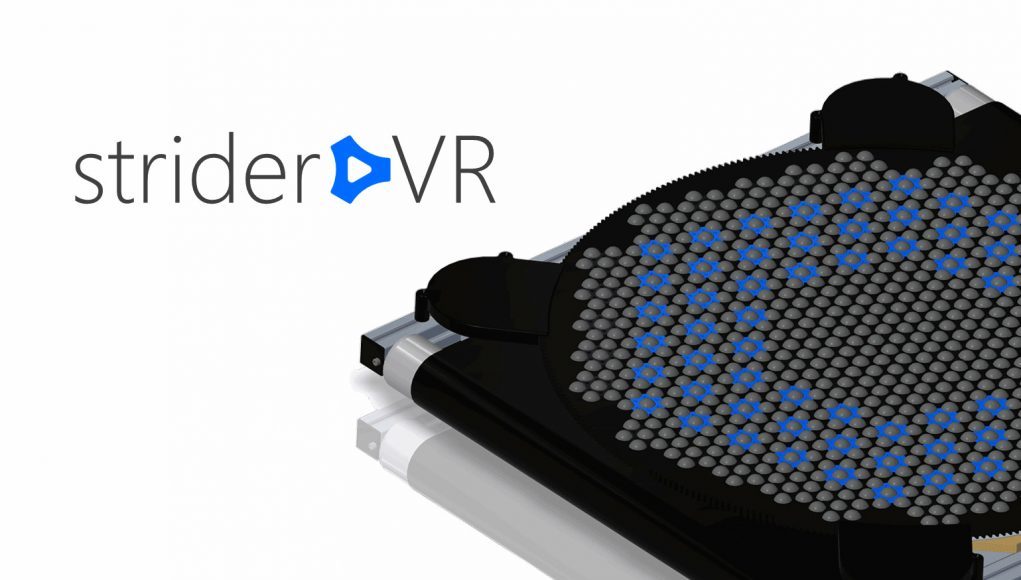Strider VR uses a novel approach to omnidirectional treadmill design, using a rotatable ball array positioned above a traditional linear treadmill, combined with a Microsoft Kinect 2 sensor. The system is currently available as a development kit from German company Pathbender.
While most omnidirectional treadmills allow the user to physically rotate through a full 360 degrees, Strider VR’s Kinect-based system actively keeps your body facing the sensor, while giving the impression that you can turn freely. As described on the developer’s website, rotational and linear displacement generated by two DC motors ensure the user remains in the centre of the platform and in the same orientation. They claim this results in a “near perfect illusion of walking in a virtual world”.
The Strider VR concept is an interesting one, as it combines full-body tracking and unrestricted walking using a fairly simple mechanical solution, but the execution appears to have some drawbacks. One of the main challenges of this type of hardware is the interpretation of virtual movement. The system has to provide responsive virtual movement (based on what your legs are doing) while not misinterpreting the corrective ‘recentering’ motions as inputs, which could be particularly difficult in this case as it relies heavily on Kinect’s motion tracking.
As explained in the FAQ, the result of constant orientation correction is that movement is limited to walking, and the device is not suitable for fast-paced first person shooters or anything that requires strafing or quick turns. Multiple side-steps are not possible, as that would require an uncomfortable, fast rotation (through 90 degrees) of the top section to align with the conveyor belt. The user appears to be walking fairly gingerly in the footage above, particularly when attempting to change direction, despite having assistance from a harness, and the tracking accuracy of the feet seems shaky. However, this footage appears to show more confident (if still somewhat awkward) strides.
Omnidirectional treadmill solutions for VR have struggled to gain traction in the consumer market, with even the successful Virtuix Omni becoming more relevant to the commercial sector. It appears that Pathbender is also positioning Strider VR towards commercial applications. Whether its motorised platform offers benefits above the low-friction surfaces of products like the Omni, Cyberith Virtualizer and Kat Walk remains to be seen.







